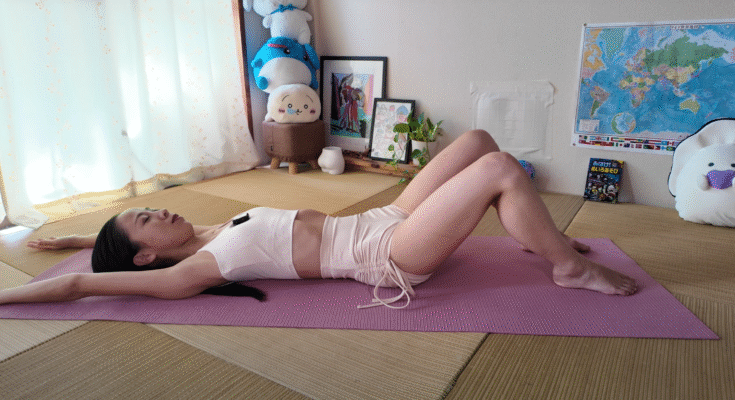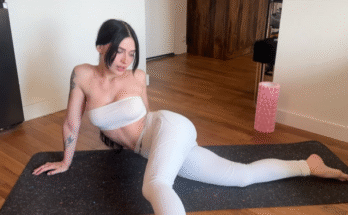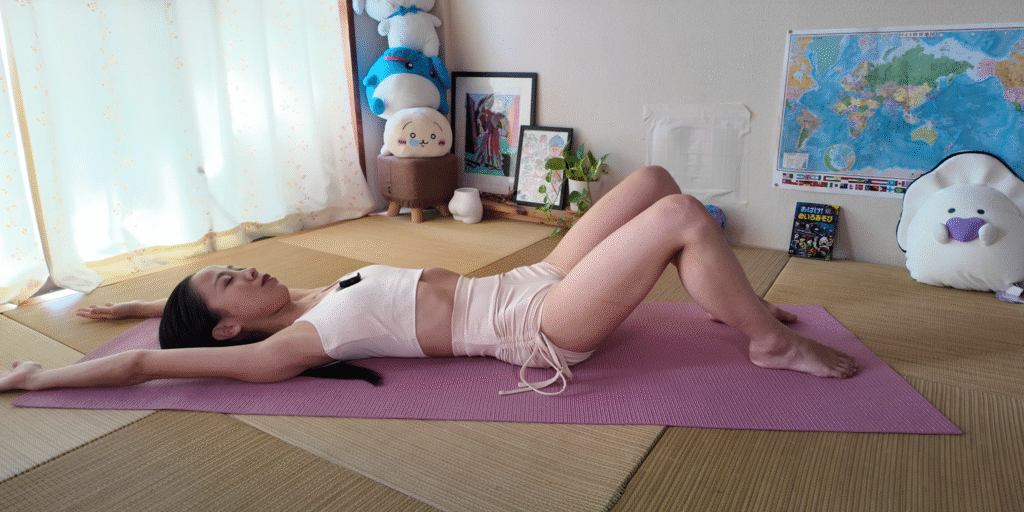
After a long day of sitting, standing, typing, driving, or simply living in today’s fast-paced world, your upper body carries more tension than you realize. Your neck tightens, your shoulders rise unconsciously toward your ears, your upper back stiffens, and your chest collapses inward. This combination can leave you feeling tired, achy, and even anxious without knowing why.
But the good news is — it doesn’t take much to unwind. By dedicating just a few quiet minutes at the end of the day to consciously relax your upper body, you can release deep physical stress, restore your posture, and reset your mind for peaceful rest.
This guide will walk you through a full relaxation routine, easy breathing techniques, and small mindset shifts to help you truly let go of the tension you’ve been carrying.
Why Your Upper Body Holds So Much Tension
Your upper body — particularly your neck, shoulders, and upper back — is like your emotional storage space. Every time you feel stressed, worried, or overloaded, your body’s instinctive reaction is to tighten up in these areas as a protective mechanism.
Think about it: when you’re under pressure, what happens physically?
- Your shoulders rise.
- Your jaw clenches.
- Your breathing becomes shallow.
- Your posture collapses.
Over time, these small reactions become habits. The body stays in a low-level state of stress long after the stressful event is over. The result? Chronic stiffness, headaches, fatigue, and even reduced lung capacity.
By learning to consciously release your upper body at the end of the day, you give your body and mind permission to recover — to switch from “fight or flight” to “rest and restore.”
Step 1: Create a Relaxing Environment
Before you start any movement or breathing, take a moment to set the tone. Find a quiet space where you won’t be disturbed for a few minutes. Dim the lights, play soft music if you like, and sit comfortably — either cross-legged on a mat or in a chair with your feet flat on the floor.
Take a deep breath in through your nose, and exhale slowly through your mouth. Feel the tension begin to melt away with every breath.
This is your time to unwind.
Step 2: Gentle Neck Release
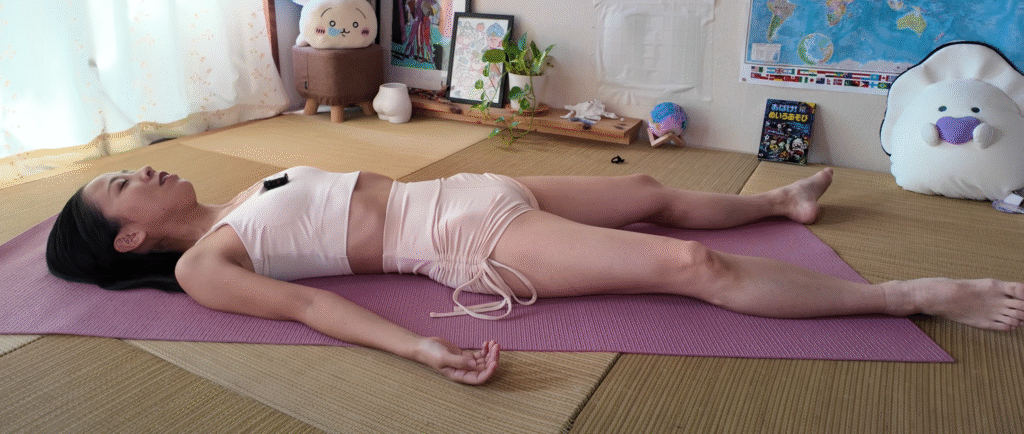
The neck is one of the first places where stress builds up. We often hold our heads forward toward screens, compressing the neck muscles and creating stiffness.
Try this simple sequence:
- Sit tall and let your shoulders relax.
- Slowly drop your right ear toward your right shoulder. Don’t force it — just let gravity do the work.
- Feel the stretch along the left side of your neck. Hold for 20–30 seconds, breathing deeply.
- Gently roll your chin toward your chest, then to the left shoulder, and hold for another 20–30 seconds.
- Finally, drop your chin fully to your chest, releasing the back of the neck.
Repeat slowly if needed.
Tip: Close your eyes. It helps you connect more deeply to the sensation of relaxation.
Step 3: Shoulder Rolls and Release
Your shoulders are like emotional antennas — they absorb tension throughout the day. Rolling them out at night resets their natural alignment and improves blood circulation.
Here’s how:
- Inhale as you lift your shoulders up toward your ears.
- Exhale as you roll them backward and down.
- Repeat this 5–8 times, moving slowly and mindfully.
- Then reverse the motion — roll them forward — to balance the stretch.
As you move, imagine that each rotation is clearing away the stress of the day, like sand slipping off your skin.
For deeper release, interlace your fingers behind your back, straighten your arms, and gently lift your hands away from your body. This opens the chest and reverses the slouching posture we often develop during work.
Hold for 20 seconds and breathe deeply.
Step 4: Chest and Shoulder Opener
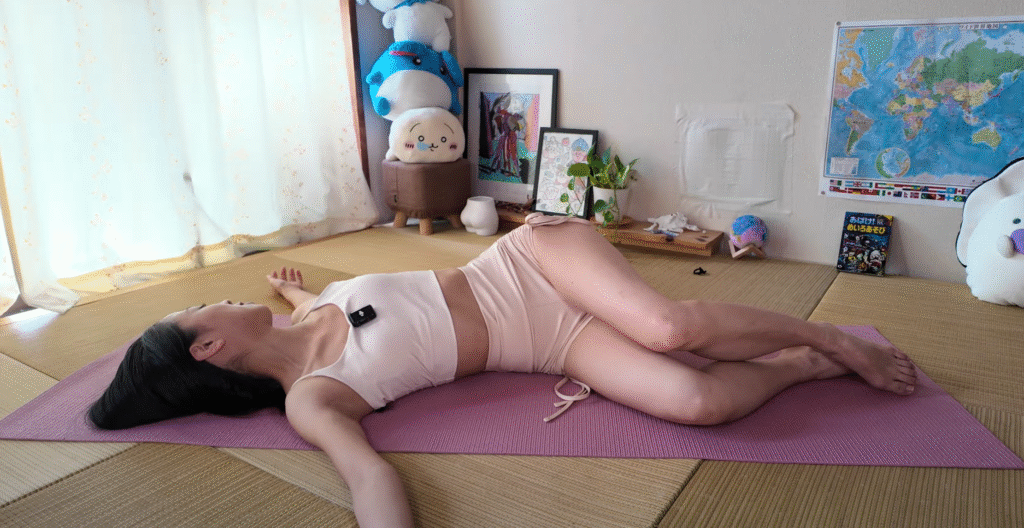
Sitting and screen time cause the chest muscles to tighten and the shoulders to round forward. Opening the chest restores your natural posture and expands your breathing.
Try this stretch:
- Stand or kneel tall.
- Clasp your hands behind your back (or hold a towel if your hands don’t reach).
- Roll your shoulders back and lift your chest upward, like you’re shining your heart forward.
- Breathe in deeply, feeling the stretch across your collarbones and front shoulders.
- Exhale and relax gently into the posture.
Hold for 30 seconds, then slowly release.
You can also perform this while lying on a rolled towel placed lengthwise along your spine — this helps counteract hunching and allows your chest to fully open.
Step 5: Upper Back Twist and Stretch
Tension in the upper back often leads to tightness between the shoulder blades. This simple twist will relieve that area and improve spinal mobility.
- Sit cross-legged or on a chair.
- Place your right hand on your left knee and your left hand behind you.
- Inhale to lengthen your spine; exhale to twist gently to the left.
- Hold for 20–30 seconds, breathing deeply.
- Repeat on the other side.
As you twist, visualize wringing out the stress trapped in your spine. When you return to center, you’ll feel lighter and more balanced.
Step 6: Shoulder Blade Hug
It might sound funny, but hugging yourself is one of the most powerful self-relaxation gestures.
Wrap your arms around your upper body so that your hands rest on opposite shoulder blades. Let your head drop slightly forward and take several deep breaths.
You’ll feel the stretch between your shoulder blades and a subtle warmth in your chest — a reminder that self-care isn’t selfish; it’s necessary.
Stay here for 30 seconds, breathing deeply.
Step 7: Mindful Breathing for Total Release
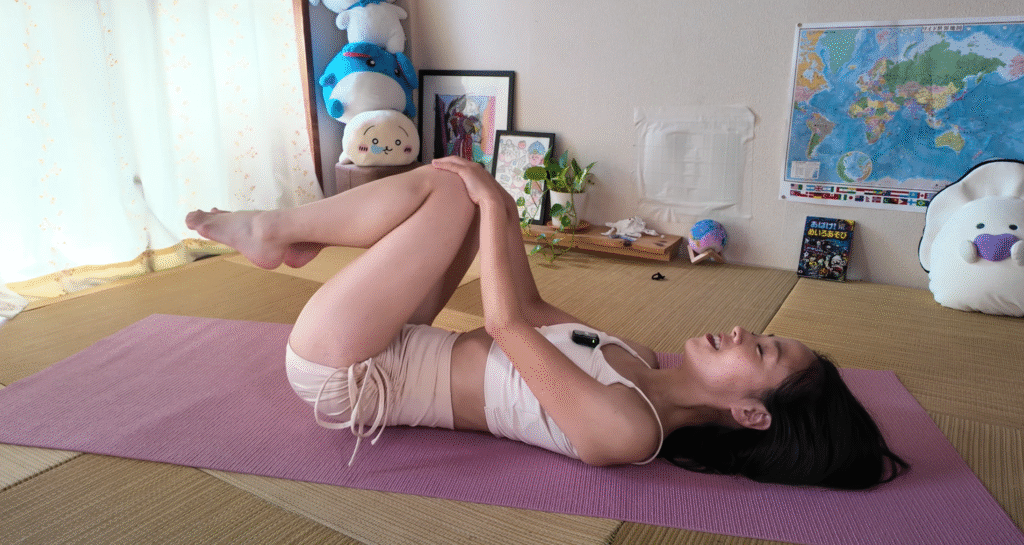
After moving through these gentle stretches, it’s time to anchor the calm through mindful breathing.
Try this pattern known as Box Breathing:
- Inhale through your nose for 4 counts.
- Hold your breath for 4 counts.
- Exhale slowly through your mouth for 4 counts.
- Pause for 4 counts.
Repeat this for 1–2 minutes. As you breathe, visualize your body softening with each exhale — your shoulders dropping, your jaw unclenching, and your upper back relaxing into the ground or chair.
Step 8: Mini Self-Massage
If your shoulders or upper back still feel tight, a short self-massage can help.
- Use your fingertips to gently knead the muscles at the base of your neck.
- Apply small circular motions along the tops of your shoulders.
- You can use a tennis ball between your back and the wall to roll out tight spots.
Move slowly and breathe deeply as you release the tension layer by layer.
The Mind-Body Connection: Letting Go Emotionally
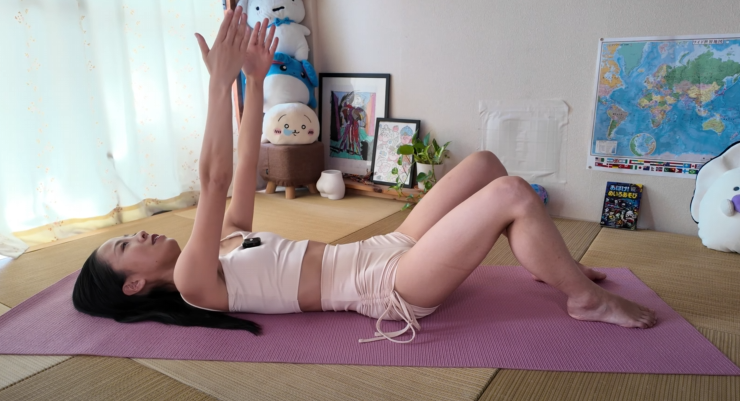
Relaxation isn’t only physical — it’s emotional. Sometimes the tightness in your upper body is linked to unspoken worries, unexpressed feelings, or mental fatigue.
As you release your body, invite your mind to soften too. Remind yourself that the day is done. You’ve done enough. You are enough.
Let every breath whisper, “It’s time to rest now.”
Building a Nightly Ritual
If you make this short routine part of your evening ritual, you’ll start noticing a shift within a week. Your sleep will improve, your mood will stabilize, and you’ll wake up with less stiffness in your neck and shoulders.
Here’s a simple 5-minute nightly flow to follow before bed:
- Neck stretch – 1 minute
- Shoulder rolls – 1 minute
- Chest opener – 1 minute
- Upper back twist – 1 minute
- Deep breathing – 1 minute
That’s all it takes to restore balance at the end of each day.
Final Thoughts
Your body is a messenger — it tells the story of how you’ve lived each day. When your upper body feels tense and heavy, it’s asking for care, for stillness, for a moment of release.
By taking just a few minutes to stretch, breathe, and relax each evening, you’re not only easing physical tension but also teaching your nervous system how to let go of emotional stress.
So tonight, before you fall asleep, sit quietly, close your eyes, and breathe. Let your shoulders drop, your neck soften, your heart open. Feel gratitude for everything you accomplished today — and give yourself permission to rest.
Because relaxation isn’t a luxury; it’s an act of love toward yourself. And your body, your mind, and your spirit all deserve that love — every single day.
